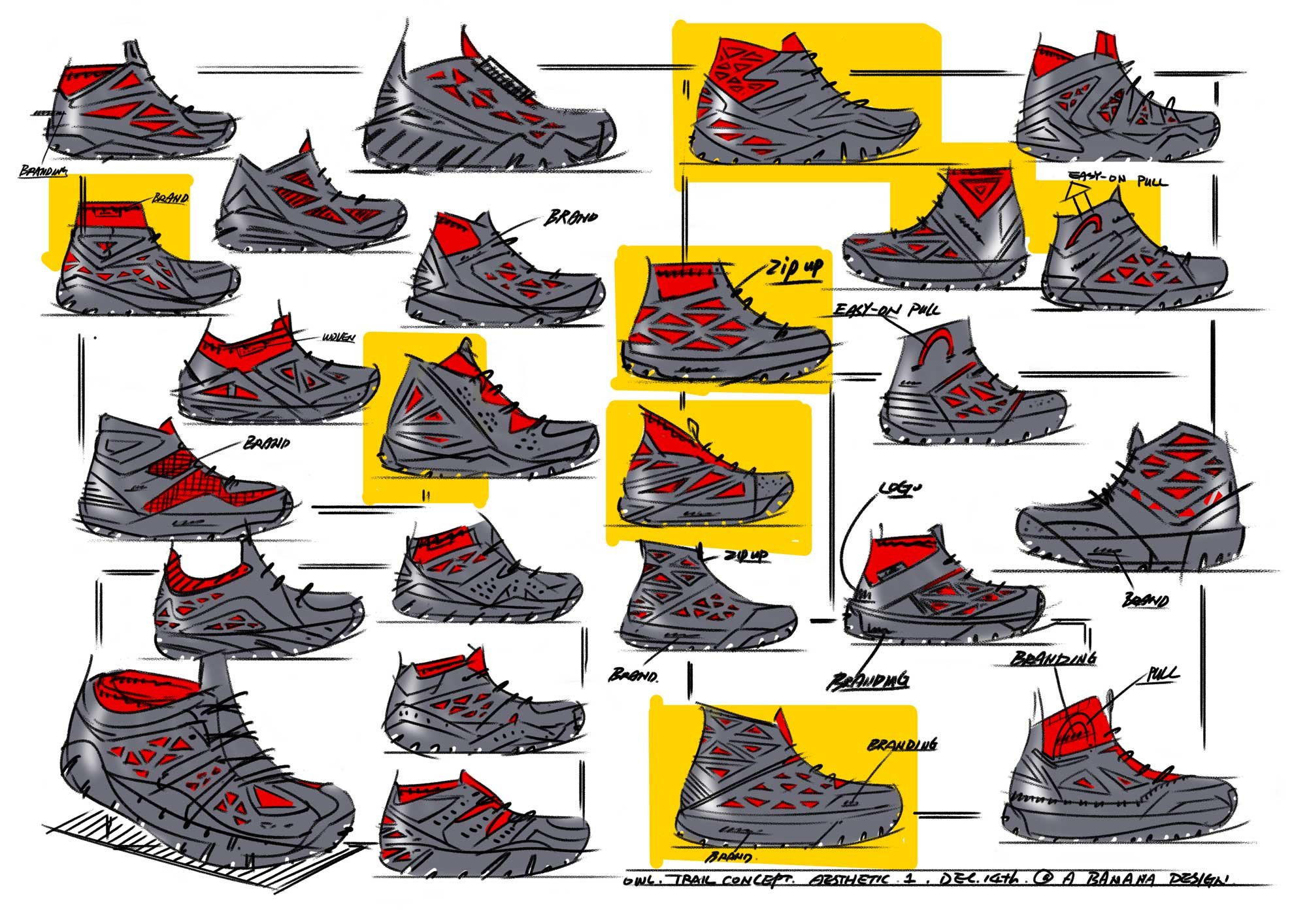Article#221120: Types of Drawings Needed in Footwear Design
When talking about the subject of “drawings” in design pretty much everyone’s thinking goes directly to draw “pretty pictures”. In an amateur kind of way everyone is right, design drawings and “pretty pictures” do have obvious relationships. In a professional environment let’s say within a design circle working on a specific product, design drawings are about information communications. Drawings (information) can be passed on a piece of napkin or done in a series of sticky notes. How “pretty” of these drawings are very much secondary as long as the other parties can clearly understand what you are trying to say through a specific (sets) of drawing(s).
A (good) design concept/product requires a structured and logical process. When a set of drawings are done in the same structured and logical manner, which can certainly help you along the way in the entire design process and communicating your ideas to the others (most product creation process involves a team).
Every designer has a particular or specific style communicating their design concepts in drawings, which is a skill totally on its own. In this article I am outlining few types of drawing that I find very useful in a design process and explain a little what each type of drawings are used for and the degree of information needed through each type of drawings.
Brainstorm Ideation Sketches
Ideation sketches are probably the most overlooked, unappreciated (by most amateur clients) yet most important type of drawings needed in a design process.
My first attempt applying for a design job at Nike got rejected because my portfolio was only focused on many “pretty pictures” not enough ideation sketches leading and explaining why these “pretty pictures” are important.
A design project without enough brainstorming ideation sketches is not a well thought product. Ideation sketches are to filter through options or possibilities of a design from overall aesthetics to a specific feature of a product. Ideation sketches can be simple doodles; you can draw over on a product; you can combine images with drawings, etc.
*In the real world of design, there are way more clients demanding “pretty pictures” form a designer than understanding the value of these ideation sketches required by companies like Nike. Rule of thumb is that you should always do as many ideation sketches as possible, but never show them to clients as presentation materials.
Below are examples of ideation sketches of an outdoor lifestyle sneaker project I did.
Focused Concept Sketches
Concept sketches are focused on one independent idea drawn from the ideation sketches. The overall aesthetics and style and look of a product/footwear idea is almost set. Now it’s time to further develop a single idea or few independent ideas with more focused detailed drawings. I like to add additional writing information with concept drawing as footnote or a reminder, and sometime do detailed diagrams to areas that require further technical development or just for fun.
These concept sketches are used within a design team to get design approval. Usually one to three concepts to be selected onto next stage of design. There are usually 1-3 versions of concept drawing each has adjustments and finer details from previous version before a design concept can be allowed moving into next stage of design material.
Line Art Drawings
Line art drawings are computer aid drawings, commonly known as CAD. There are two types of drawing needed in footwear design line art color-ups and technical drawings. Color-ups are used to filter through color palettes for the season and theme. Technical drawings are for development which can get quite complicated.










